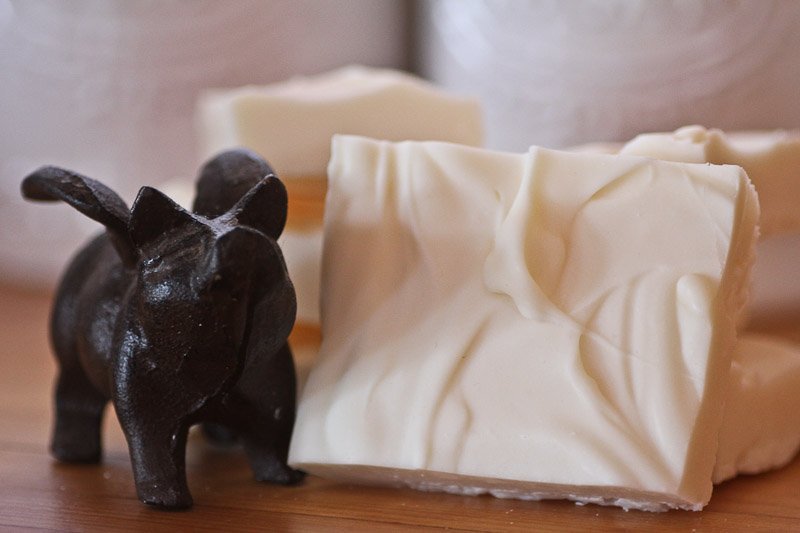
Before there were fancy soaps with exotic ingredients like coconut oil and shea butter there was good old fashioned lard and tallow soaps. Lard is a cheap and easy to source ingredient for most people. It can be purchased from the store or on-line. You can also render your own at home.
Lard soap is a beautiful white bar with a delicate texture and a clean, light scent. It’s low sudsing qualities and gorgeous lather make it the perfect shaving cream and base for many homemade cleaners and detergents. Depending on where you source your lard, you can also have confidence that there are zero added chemicals.
Our lard comes from our own pasture raised, organic fed pigs. We vowed to waste nothing from these animals and so far we have been true to our word. I recently rendered the lard for this recipe, from a large bag of fat we had stored in the freezer.
Lard Soap Recipe ~ Makes 2.5LB of Soap
This recipe is very basic with only three ingredients. You can add essential oils to this recipe simply by stirring them in just before you pour the soap into your mould.
Ingredients
- 2LB lard
- 12 oz water
- 4 oz lye
optional: 5-10 drops of essential oils
Supplies Needed
- mason jar or large Pyrex measuring jug
- large wooden spoons
- immersion blender (optional)
- goggles
- rubber gloves
- soap moulds (can be as basic as cardboard boxes)
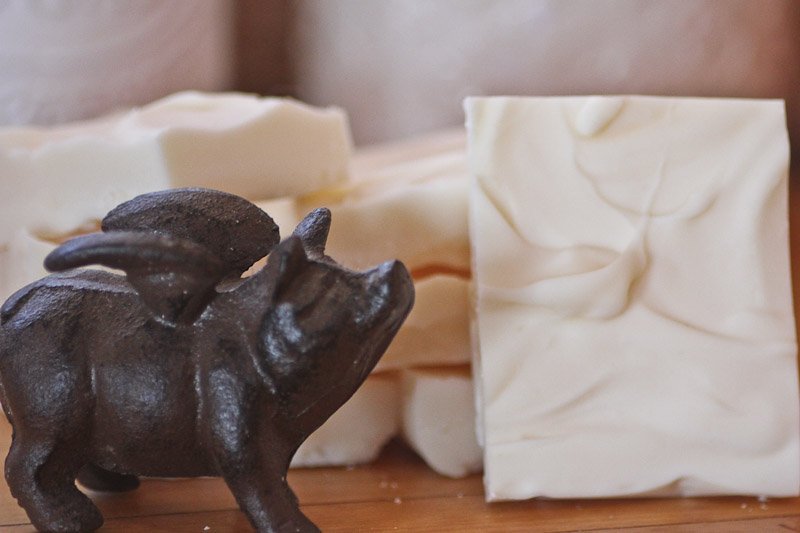
Instructions
Wearing gloves and goggles, pour cold water into a mason jar. Place jar in sink. Carefully measure your lye. Add the lye to the water slowly, stirring gently until dissolved. Do not splash the lye onto your body, it can cause severe burns. Don’t breathe in the fumes, ensure the room is well ventilated. Do not touch the jar. The chemical reaction makes this liquid very hot. Let it sit and cool.
In a separate non aluminium saucepan (I use a large enamelled stock pot) heat your lard over low heat until it has melted completely.
When the lye mixture and the lard mixture are close to the same temperature (usually an hour for the lye but you can use a thermometer 120 degrees F) slowly pour the lye into the lard mixture, being careful to not splash. Lard soap recipe
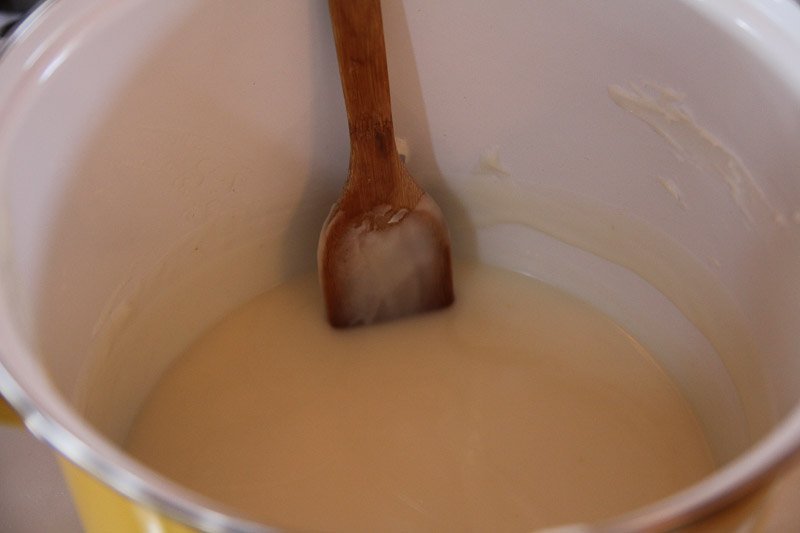
- Stir, stir, stir, until the mixture thickens. Add your fragrance if using. If you are impatient like me, you can use an immersion blender to speed up the process. After 15 minutes the mixture will thicken and congeal. When you trace your blender or spoon through the mixture the pattern will stay (this is called trace). Keep in mind this can happen in a few minutes as well. Just keep stirring until you get trace.
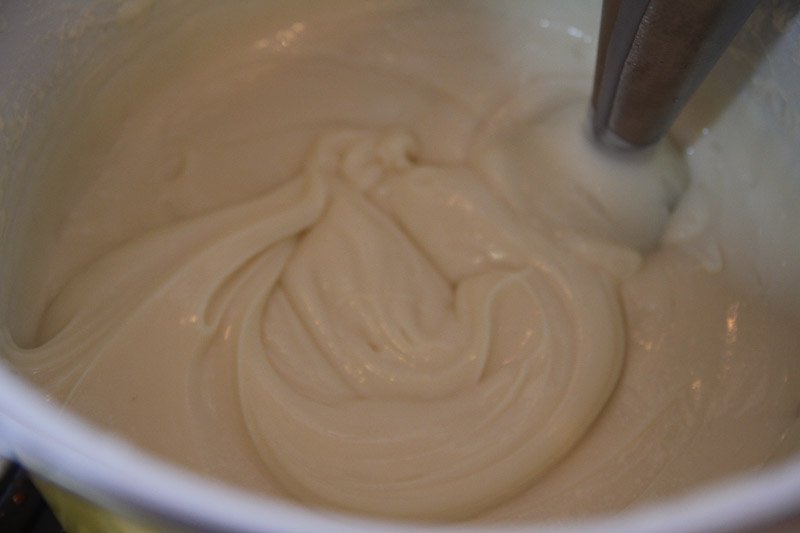
- Pour your soap mixture into a greased or paper-lined soap mold. Gently tap mold to remove any air bubbles. I have cardboard boxes and trays that I line with wax paper. Nothing fancy required.

Cover your soap with a blanket or towel and let stand for 24 hours.
Turn soap out of mould. Wait another day, then cut into bars as desired.
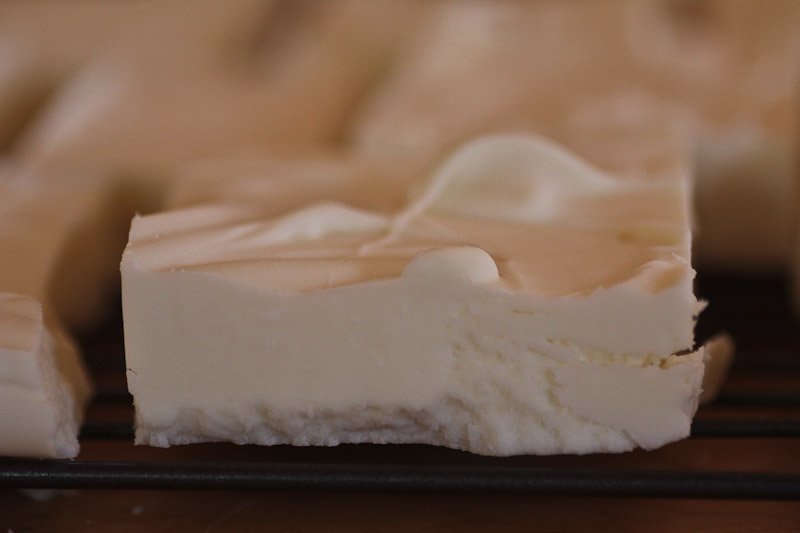
Dry bars for a few weeks (the longer the better), turning occasionally to ensure they are drying uniformly. You want the soap to harden sufficiently for grating if using for other recipes.
Clean up. Wash your soap making equipment with hot soapy water and also rinse with a little vinegar to neutralize any traces of lye. Any wooden spoons that you use should be used only for soap making
Building a greener, more beautiful world one seed at a time.
Homesteading | Gardening | Frugal Living | Preserving Food| From Scratch Cooking|
You can also find me at: walkerland.ca
Photo copyright: @walkerland

